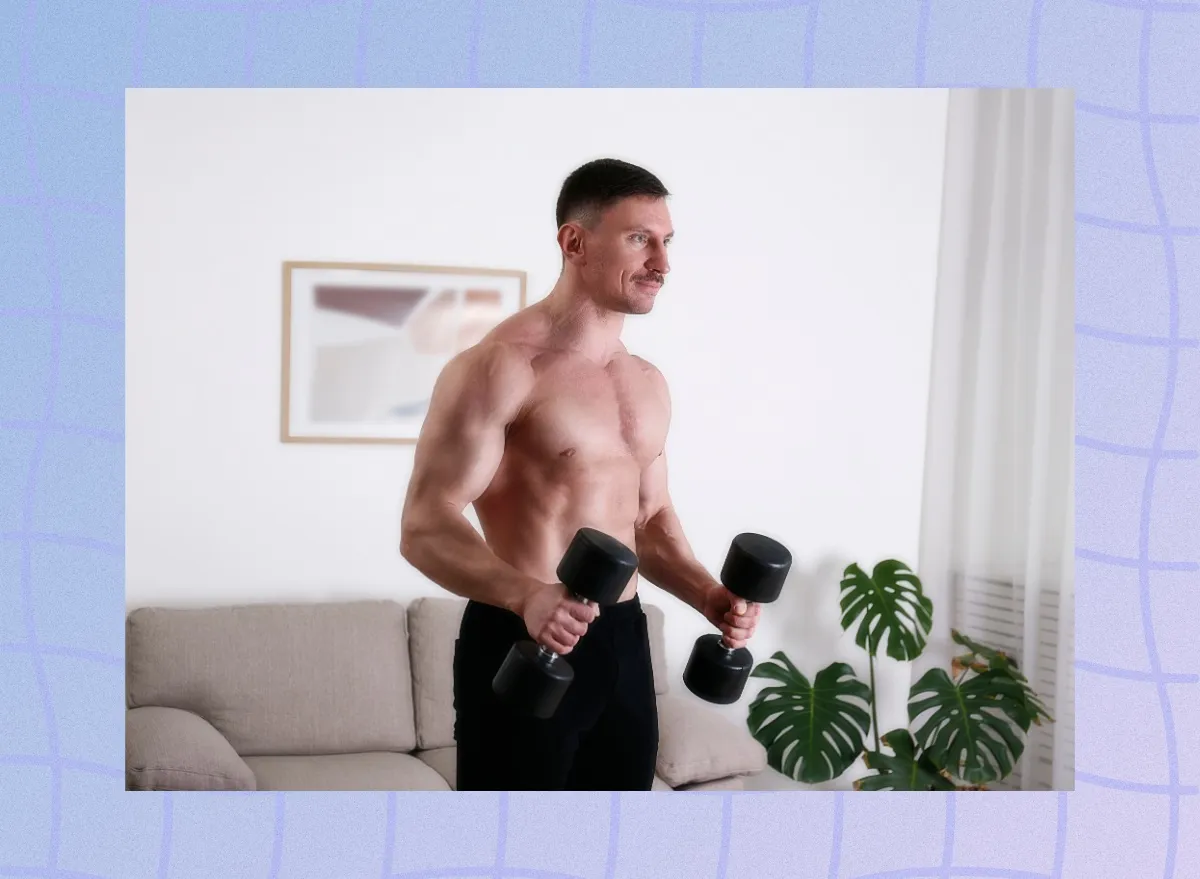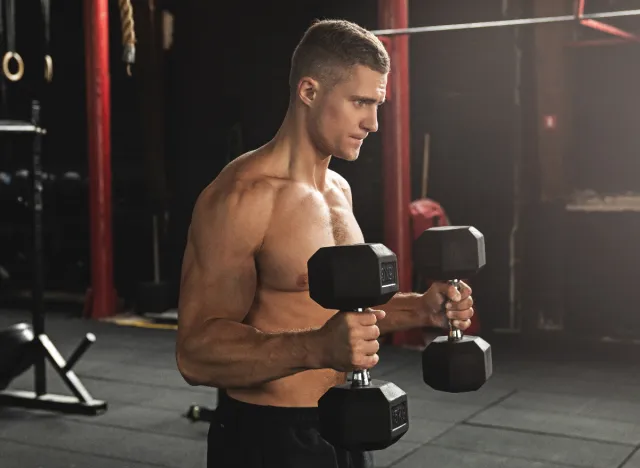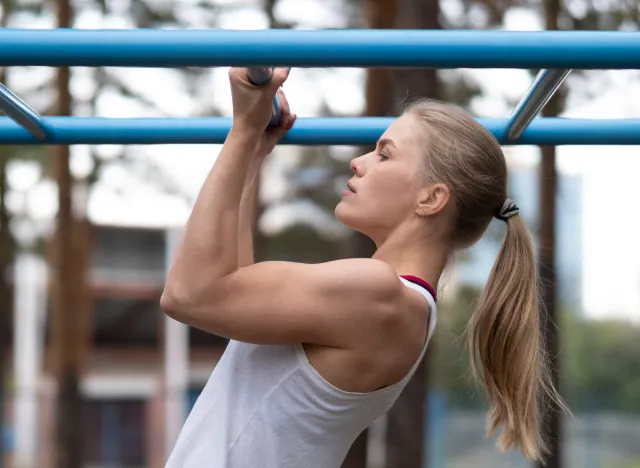The '5/20' Method Can Give You Sleeve-Busting Biceps—Here's How It Works

If you're looking to build muscular, sleeve-busting biceps, the "5/20" method may be exactly what you need to achieve those gains. This training method involves lifting heavy weights in a lower rep range and then lighter weights in a higher rep range to grow your muscles and boost endurance. By engaging your biceps from various angles, you'll be well on your way to obtaining your desired results. Get excited, because we spoke with a fitness pro who breaks down everything you need to know about the 5/20 method.
How the 5/20 Method Works

This training method involves performing three or four exercises that fire up the same muscle group, explains Steve Stonehouse, NASM-CPT, the director of training and experience for Body Fit Training. You'll begin lifting heavy weights in a low rep range and then work toward lighter weights or resistance for "a high-rep burnout."
Stonehouse provides an example. "If you're applying this to the biceps, you might start with a challenging exercise like a bicep chin-up for 5 reps. Then, immediately move on to a preacher curl for 10 reps with a challenging but doable weight selection," he explains. "Then, you could move on to a hammer curl with slightly lighter weights for 15 reps, and finally, finish with regular dumbbell bicep curls using a weight that's feasible for 20 reps."
As you progress through this training method, you decrease the selected weight but bump up the number of reps to burn out the particular muscle group you're targeting.
How Often Should You Do the 5/20 Method?
Stonehouse recommends implementing the 5/20 method into your fitness routine once or twice a week. Doing so will give your muscles ample time to rest and recover between sessions and help you avoid overtraining.
Precautions To Take With the 5/20 Method

Always listen to your body! If you don't perform strength workouts regularly, Stonehouse wouldn't recommend the 5/20 method, as focusing on 50 reps for one muscle group in a short session can put too much stress on your body.
"[That being said,] if you are accustomed to strength training, this could be a good method for you to get a good pump or burn," he adds. "Your muscle should be uncomfortable or sore by the end of the sequence but not in pain. If you ever start to feel pain, you have likely overtrained."
It's always a smart idea to consult the guidance of a certified personal trainer or strength coach.









